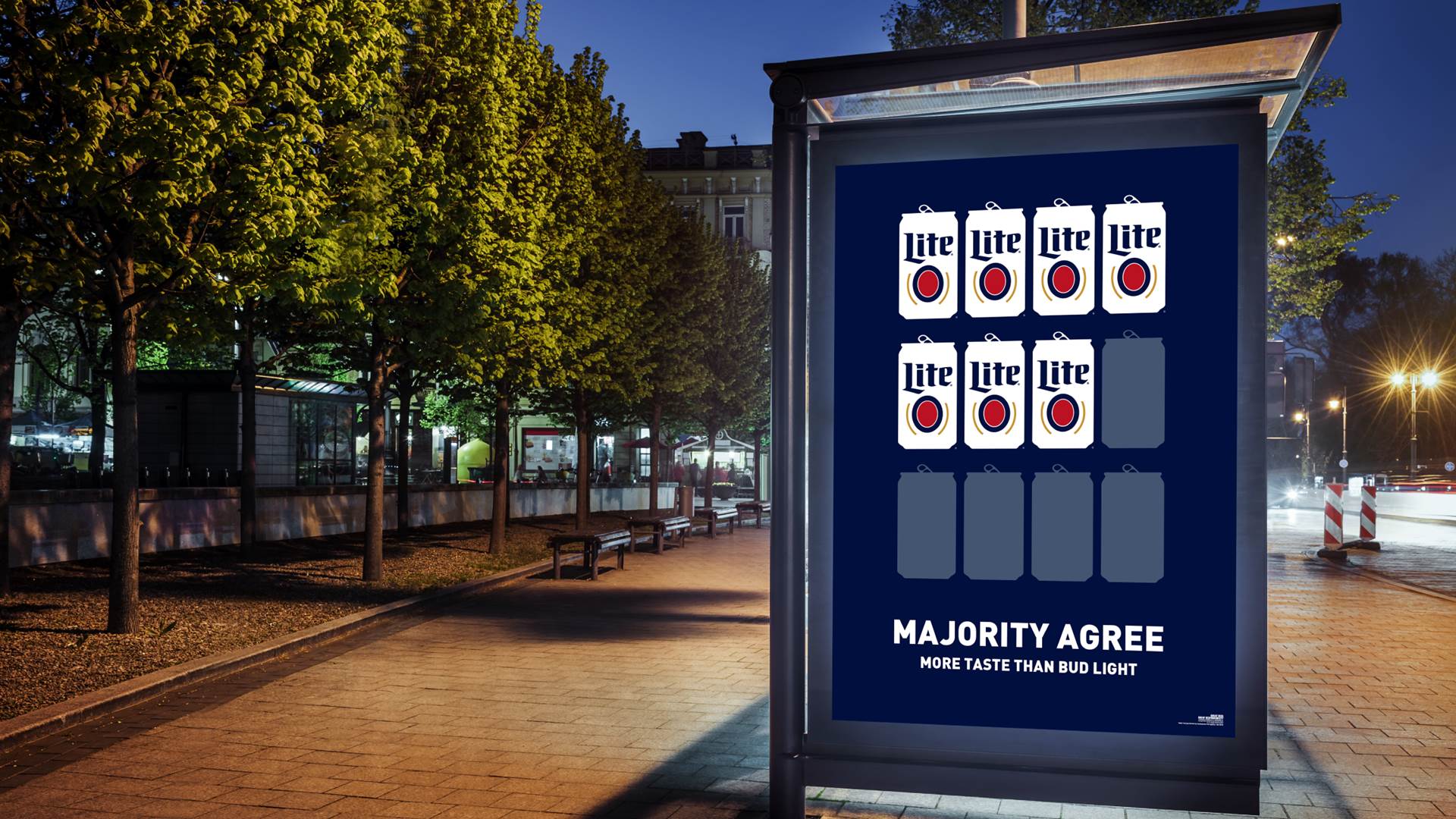Miller Lite is dialing up pressure on its biggest competitor with a new round of ads highlighting data that shows a majority of beer drinkers agree it has more taste than Bud Light.
Underscoring the brand’s commitment to be bolder and more competitive in 2018, the new series of television, digital and out-of-home spots shine a quality-focused spotlight on Miller Lite by doubling down on its key attributes: delivering more taste with calories and carbohydrates lower than most of its competitors.
The brand this week surged onto Nielsen’s Top 10 Growth Brands list, posting a 0.08 percentage point share gain in the most-recent four-week period.
Its new campaign is part of a broader effort called “What are you holding?” which asks drinkers to take pride in choosing Miller Lite over its competitors. The pointed provocation builds off its existing “Hold True” campaign.
“By asking this simple question, it directly provokes beer drinkers to reconsider why they should be proud to hold a Miller Lite,” said Greg Butler, MillerCoors vice president of strategy and former vice president of the Miller family of brands.
In a speech to distributors today at an event in Austin, Texas, Butler said: “We know we have the better light beer, which is why we must continue to prove that our beer is the truly superior light beer.”
The brand unveiled a series of new work dialing up its contrast with Bud Light this week at its annual sales convention, making clear Miller Lite views its path to growth coming directly through Anheuser-Busch brands, particularly the floundering Bud Light.
“We’re going to intensify our efforts to directly source share from Bud Light, because that’s where the volume is, and because we believe it is a brand that is only going to get weaker.”
Miller Lite’s plan is to differentiate itself by positioning its beer as unique among light lagers, which is critical in the brand’s quest to return to growth, and “not merely keep our losses in line with the industry average,” said Butler.
Miller Lite declined 1.9 percent in case volume in 2017 but gained 0.6 percentage points of share in the premium light segment, largely because the nation’s top-selling beer, Bud Light, fell much more precipitously (-5.3 percent in case volume, per Nielsen.)
But there’s more work to do, Butler said. Miller Lite plans to add its calories and carbohydrates to its packaging and displays to sharpen its focus on messaging that works at retail.
Miller Lite also aims to connect with fans more on digital – the medium where most of its millennial-age consumers live.
To help its on-premise sales, Miller Lite designed a new signature glass that “breaks through on the bar” with consumers.
Butler says Miller Lite has a major opportunity among women, “who have increasingly been turned off by (Bud Light’s) silly image;” from younger legal-age drinkers entering the category who “haven’t yet become loyal to a brand;” and among Latino drinkers, who “love light beer” and could be a “massive source of new volume.”
Taken together, Butler says, all signs point to the brand being poised to return to growth. “The question is not if,” he says. “The question is when.”

